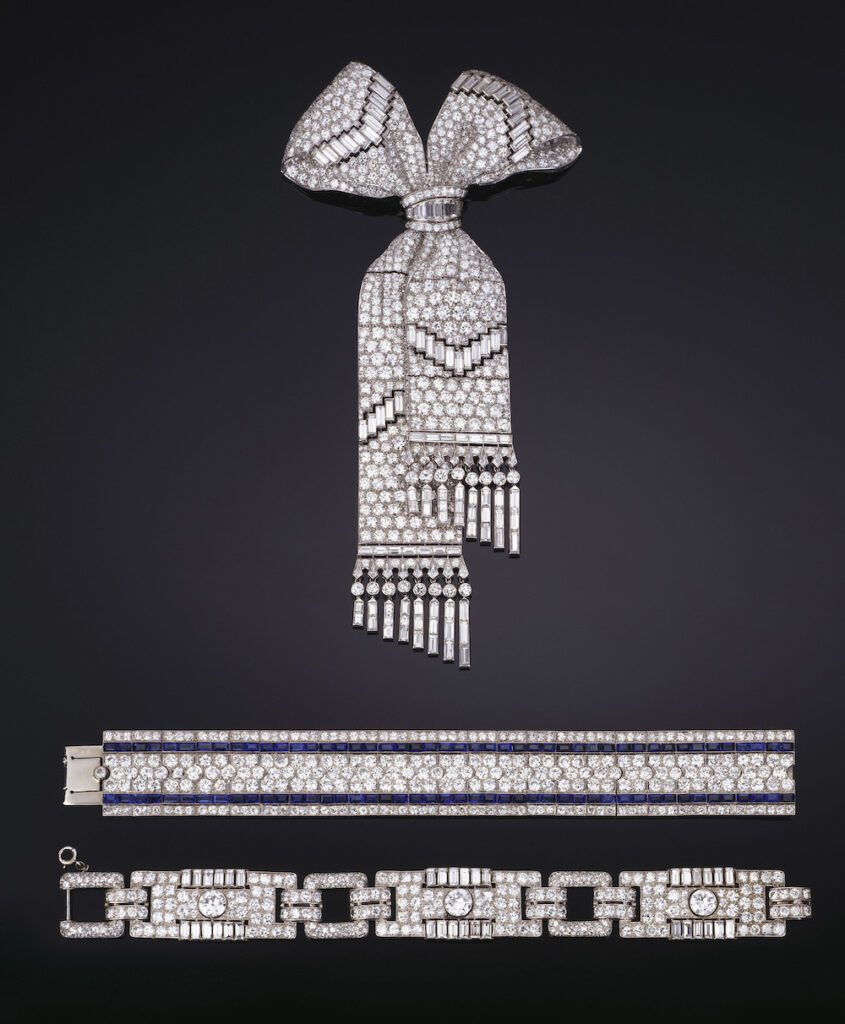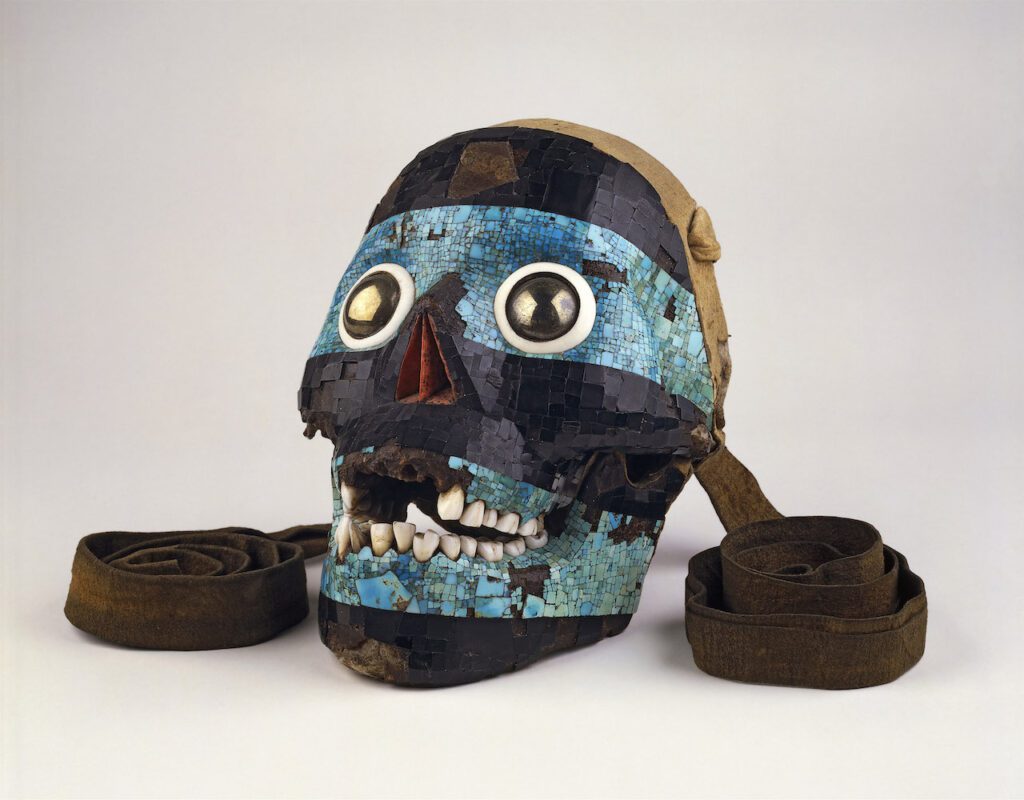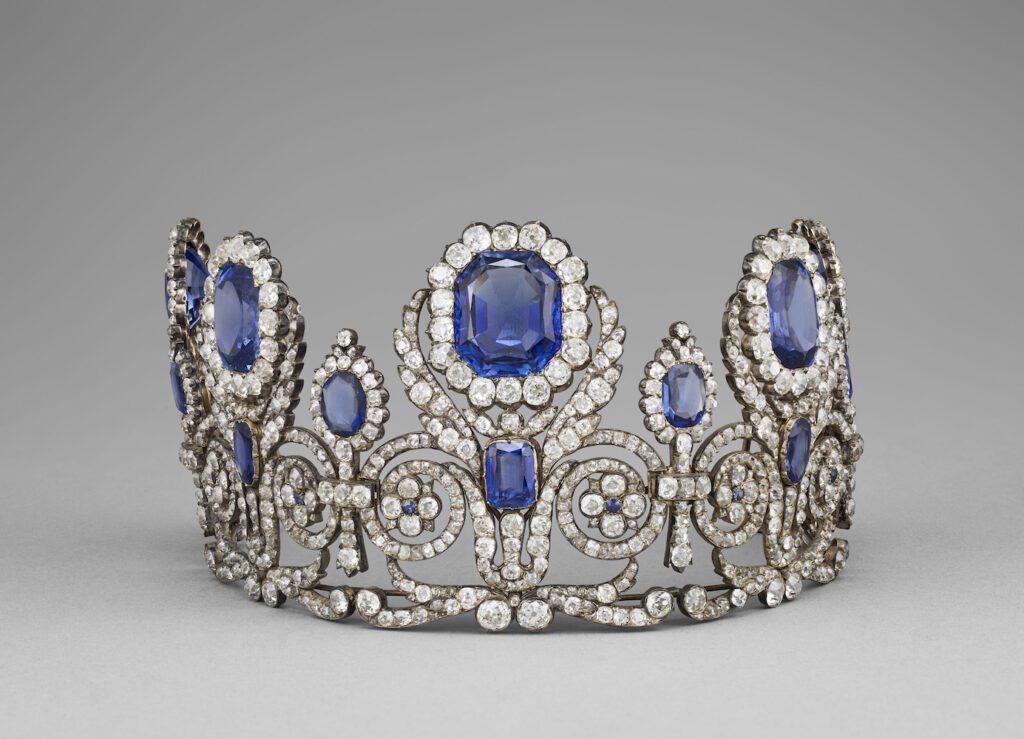
Jewelry has accompanied human history since antiquity. To adorn oneself with precious stones and metals during life was a symbol of personality while to enrich the deceased with jewelry was a good omen for a new journey into the afterlife.
The use of jewelry goes as far back as the Paleolithic age when necklaces and objects were made of shells, pebbles, tusks, teeth and animal horns. The turning point in jewelry occurred with the Copper Age and the working of metals, even precious ones; subsequently important developments were made by the Egyptian and Mesopotamian civilizations. The tombs of the Pharaohs are an admirable example of use of precious materials and great craftsmanship (with the techniques of gilding and lost wax).
Since antiquity, it is also possible to note the style and outline a history of jewelry through decorative shapes and lines. The Greeks favored essentiality. Sober lines, essential jewelry such as disc earrings, and decorative elements taken from nature (such as olive leaves). The Etruscans, on the other hand, favored more complex workmanship, such as granulation. The Romans, the use of pearls and precious stones.
Pre-Columbian civilizations were no different, as the well-known use of gold of the Mayas and Incas shows. For these people, in fact, the color and brightness of gold with its similarity to the sun was a symbol of the divine. Artefacts show us how gold was widely used to make objects for sacred rituals, such as masks and jewelry.
The use of precious stones could be an entire separate study. Tales of Marco Polo in which he speaks of precious stones and especially diamonds from India are well-known. Furthermore there are admirable examples in which jewelry with stones became symbols of power, such as the iron crown or Charlemagne’s talisman, made with two transparent cabochon sapphires placed side by side along with a relic of the cross of Christ or, in more recent times, the jewelry of the Crown of England.
The Renaissance represented a special moment in the history of jewelry, enhancing this art form to such an extent that jewelry became one of the minor arts. Goldsmiths, in particular, were the most respected. In the Florence of the Medici, thanks to Cosimo I, the workshops of gilders, beaters, sculptors and goldsmiths found their place near Ponte Vecchio. Well-known Renaissance masters such as Donatello, Botticelli or Brunelleschi began their careers in these very workshops.
It was also during the Renaissance that painters began to dwell on the preciousness of jewelry, and depicting it along with the richness of the clothing and fashion of the time. Raphael was a painter who was always very attentive to the reproduction of jewelry, as can be seen in these details.
The court of Versailles reached the pinnacle of opulence, and even in the realm of jewelry it is easy to find exquisite objects. The European nobility was the real driving force behind fashion and the evolution of modern jewelry.
Jewelry became the prerogative of the upper middle class as a means of social affirmation. Even after the French Revolution, albeit with less pomp and exploration of new techniques, jewelry remained the focus of the ruling classes. The style became eclectic, with the experimentation of the 19th century closely linked to industrial manufacturing techniques, sometimes in series, and also to the discovery of new deposits of precious materials in colonialist Africa and the Orient.
Let us not forget how the great archaeological discoveries of the past also influenced the eclecticism that characterized 19th century jewelry, such as Schliemann’s discovery of Priam’s treasure.
Jewelry established itself in more recent times as a major player in the Art Nouveau movement and then in Art Deco. The discovery of color as well as new shapes and decorative motifs is the characteristic that will accompany all forms of expression in the 20th century, even after the war.

Scala Archives represents some of the most prestigious international museum collections whose photographic archives allow a visual depiction of the history of jewelry.
Here are the 5 collections you absolutely must view in order to travel through the centuries and civilizations tracing the history of jewelry:
The V&A has one of the most beautiful and comprehensive jewelry collections in the world. Over 3,000 pieces of jewelry tell the story of jewelry making in Europe from antiquity to the present day.
Among the remarkable pieces in the collection are Wunderkammer rarities, such as this brooch with an illuminated eye, an early 19th century English-made token of love.
Such as the jeweled pendants given by Elizabeth I to her courtiers
or even such as diamonds and rubies from Rajasthan or other parts of the colonial empire
The Calouste Gulbenkian private collection allows you to travel through 5,000 years of history, and is today one of the most important private collections of international art. Among the wonders of this museum is a room devoted exclusively to the jewelry and glassware of René Lalique, the undisputed master of Art Nouveau jewelry.
René Lalique (1860-1945) and Calouste Sarkis Gulbenkian (1869-1955) met in the mid 1890s. The collection boasts almost two hundred pieces purchased by Calouste Gulbenkian directly from René Lalique between 1899 and 1927 and reveals the prodigious imagination of the artist as well as the tastes and personality of the collector.
The British Museum makes it possible to discover two million years of history, spanning six continents, in one place. The collection concentrates almost four and a half million objects in one place. Among thousands of treasures to be discovered, we can take a close look at the incredible workmanship of the Royal Game of Ur
or the intricate carving of an African hunting horn
as well as a ceremonial mask of the indigenous peoples of the north-west coast of America

or ancient Mayan ornaments on shells
One of the most visited rooms of the Louvre Museum in Paris is the one displaying the ancient and extremely valuable collection of French crown jewelry. When speaking of the crown jewels the fascinating story of the Blue diamond, also known as Bleu de France (Blue of France) comes to mind.

This diamond arrived at the court of King Louis XIV in 1669 and was entrusted for cutting to the skillful hands of court jeweler Jean Pittan, who after two years of work applied a cut known as the ‘rose of Paris’. The stone was then set in a gold brooch. The jewel passed from sovereign to sovereign until the beheading of Marie Antoinette. After the French Revolution, on 11 September 1792, the jewel was stolen. After countless auctions and changes of hands it was tracked down in 1950 when Harry Winston, a New York collector, donated it to the Smithsonian Institution’s Museum of Natural History in Washington.
The Smithsonian’s collections represent the shared history of the United States of America, art from around the world, and the immense diversity of the natural and cultural world.
Of great significance is the collection of minerals and gems housed at the National Museum of Natural History, consisting of some 350,000 mineral specimens and 10,000 gems. One of the largest of its kind in the world. The Hope Diamond, mentioned above, is kept here along with hundreds of other spectacular jewels and gemstones.
Scala Archives is pleased to represent these collections as an official agent.
Many images are already available online but we can carry out customized iconographic research and provide additional content not yet available online. View more Jewelry on our website or contact us.
****